#open source erp software
Explore tagged Tumblr posts
Text
How Can We Do Odoo UI Customization?
Enhance your Odoo experience with our comprehensive guide on UI customization. Discover practical tips and step-by-step methods for tailoring your interface to boost usability and match your brand identity.
#odoo erp development services#odoo erp software#odo erp consulting company#odoo erp for small business#open source erp software
0 notes
Text
Why Do SMEs Choose Open Source ERP Software? | MindRich Technologies
Explore why SMEs are turning to Open Source ERP Software by MindRich Technologies. Discover the simplified benefits, from cost-effectiveness to enhanced efficiency, that make it a game-changer for small and medium-sized businesses. Join us in unraveling the potential of Open Source ERP for streamlined operations and business growth.
#Open Source ERP Software#Odoo erp software#Erp software#ERP Solutions#MindRich Technologies#Odoo 16#Odoo 17#Business solutions#Software Company#Software Development Company
0 notes
Text
#hire shopify experts#shopify custom sections#shopify theme customization#shopify development services#shopify development company#Software development services#Software Development company#Hire software developers#Open Source Implementation#Ecommerce Factory#ERP Development#Refining Existing Applications#Conversion Rate Optimization#Don’t Just Update#Upgrade!#Startup Solutions#ADA Compliant Website#Online Marketplace Development#Theme Development#Platform Migration
2 notes
·
View notes
Text
Optimizing Operations with Supply Chain Management Malaysia
Efficient supply chain management is vital for businesses to stay competitive, reduce costs, and meet customer demands. Supply Chain Management Malaysia solutions help organizations streamline their procurement, production, and distribution processes. By improving visibility, automating tasks, and optimizing workflows, businesses can ensure that their supply chain operations are cost-effective and agile.
#Open Source Erp Malaysia#Erp Customization Malaysia#Enterprise Resource Planning Malaysia#E-Commerce Erp Software Malaysia#Erp Consultation Malaysia#Cloud Erp Malaysia#Small Business Erp Malaysia
0 notes
Video
youtube
How an Open-Source ERP Can Streamline Your Business and Boost Growth
Are repetitive, manual processes holding back your business growth? An Enterprise Resource Planning (ERP) system could be your solution! Automate those time-consuming tasks, reduce errors, and gain real-time data insights while adapting seamlessly to your business's evolving needs. Ready to streamline operations with open-source ERP? Reach out to us: [email protected] Learn more: https://www.noitechnologies.com/
0 notes
Text
Enhancing Student Experience with Examination Management Software

Introduction
In today's digital age, educational institutions are increasingly turning to advanced technologies to streamline processes and enhance student engagement. Exam management software stands out as a crucial tool that not only simplifies administrative tasks but also significantly improves the overall student experience. Let's explore how these innovative solutions benefit students and institutions alike.
Benefits of Examination Management Software
1. Streamlined Exam Scheduling
Exam management software automates the scheduling process, ensuring efficient allocation of exam dates, times, and venues. This eliminates scheduling conflicts and provides students with clear, reliable exam schedules well in advance.
2. Enhanced Communication Channels
Centralized platforms within the software facilitate seamless communication between administrators, faculty members, and students. Automated notifications keep students informed about exam details, changes, and important deadlines, fostering transparency and reducing uncertainty.
3. Improved Accessibility and Flexibility
The software supports diverse student needs by offering alternative exam formats, accommodating disabilities, and providing options for remote exams. This ensures equitable access to exams and allows students to participate in assessments regardless of physical location.
Key Features of Examination Management Software
1. Online Exam Capabilities
Advanced software solutions enable institutions to conduct exams online, offering flexibility and convenience to students. Features like secure exam environments, remote proctoring, and real-time monitoring ensure exam integrity while accommodating remote learning scenarios.
2. Data Security and Privacy
Robust data security measures protect sensitive exam information, ensuring confidentiality and compliance with privacy regulations. Encryption protocols and access controls safeguard student data throughout the exam lifecycle.
3. Analytics and Reporting Tools
Built-in analytics provide valuable insights into student performance trends, exam outcomes, and resource utilization. Administrators can leverage these insights to make data-driven decisions and enhance educational strategies.
Conclusion
Exam management software revolutionizes the way educational institutions manage exams, offering enhanced scheduling, communication, accessibility, and data security. By embracing these technologies, institutions can create a student-centric environment that promotes academic success and prepares students for future challenges. Investing in exam management software isn't just a technological upgrade—it's a commitment to providing a seamless, supportive exam experience that empowers students to excel.
#school erp#erp for school#exam management erp system#online exam#exam management software#open source exam erp system#exams#software
0 notes
Text
OpenERP and ERPNext are two prominent open-source ERP solutions, each with its unique features and capabilities. Discover the differences between OpenERP (Odoo) and ERPNext to make informed decisions for your business's ERP requirements. Compare features, costs, and ease of use to choose between Odoo vs. ERPNext. Make the right choice for your open-source ERP needs.
#inwizards software technology#odoo development company#odoo development services#odoo services#odoo#OpenERP and ERPNext#Odoo and ERPNext#ERPNext#OpenERP and#open-source ERP solutions#odoo erp solutions
1 note
·
View note
Text
Exploring the Top 10 SAP Competitors and Alternative ERP Solutions in 2023
SAP ERP (Enterprise Resource Planning) has been a leading company in software that provides complete solutions to manage various aspects of business. However, the changing technology landscape and growing customer demands have resulted in the development of other ERP solutions. In this blog, we will look at some of the best SAP Competitors available in the market, focusing on their benefits,…
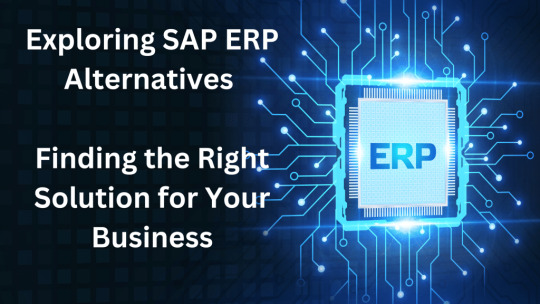
View On WordPress
#alternatives to sap erp#best sap software#companies similar to sap#competitor to sap#is sap the best erp#netsuite competitors analysis#oracle netsuite alternatives#other erp software#sap alternative#sap alternative open source#sap alternatives#sap and other erp systems#sap competitor#sap competitors#sap competitors erp#sap competitors list#sap equivalent software#sap erp examples#sap konkurrenz#sap like software for small business#sap software alternatives#what companies use sap erp#what software is similar to sap#who is sap&039;s biggest competitor#who uses sap erp
0 notes
Text
Why is Odoo the Superior Choice Over Tally ERP
Odoo and Tally Software Company are both popular choices, but in this blog post, we will delve into why Odoo software stands out as the superior option. From its comprehensive features to its flexibility and scalability, Odoo ERP offers a wide range of advantages that surpass Tally ERP.
#odoo erp#tally software company#odoo software#odoo accounting#odoo open source#tally erp#odoo erp development
0 notes
Text
ERPNext: The Ultimate Solution for Small Businesses
Introduction Enterprise resource planning (ERP) software is a suite of integrated applications that helps businesses manage their core processes, such as accounting, manufacturing, sales, and human resources. ERP systems have been around for decades, but they are evolving rapidly to meet the needs of modern businesses. One of the most promising new ERP solutions on the market is ERPNext. ERPNext…
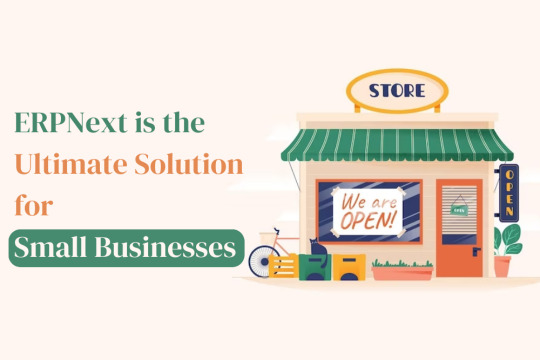
View On WordPress
#Affordable ERP#Cloud-based ERP#Enhanced flexibility#Enterprise resource planning#ERP#erp frappe#ERPNext#erpnext benefits#erpnext customers#ERPNext demo#erpnext for small business#erpnext software#frappe erpnext#frappe open source#Free ERP software for small business#Future of ERP#Improve compliance#Improve efficiency#Increase productivity#Innovative ERP#Open-source ERP#Reduce costs#Scalability#Scalable ERP#Secure ERP#Small businesses#Trends
0 notes
Text
Why Do SMEs Choose Open Source ERP Software? | MindRich Technologies
Explore why SMEs are turning to Open Source ERP Software by MindRich Technologies. Discover the simplified benefits, from cost-effectiveness to enhanced efficiency, that make it a game-changer for small and medium-sized businesses. Join us in unraveling the potential of Open Source ERP for streamlined operations and business growth.
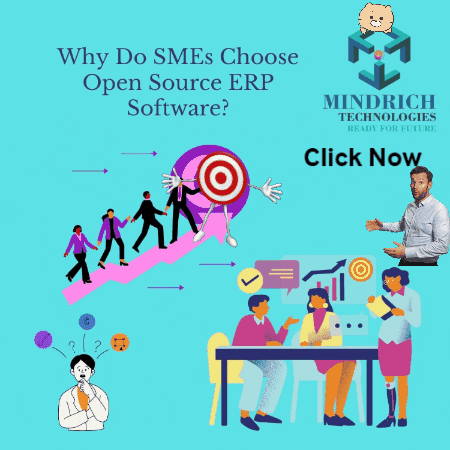
#Open Source ERP Software#Odoo erp software#Erp software#ERP Solutions#MindRich Technologies#Odoo 16#Odoo 17#Business solutions#Software Company#Software Development Company
0 notes
Text
#shopify partner login#hire shopify experts#shopify custom sections#hire shopify developers#shopify development company#shopify development services#Software Development services#software development company#hire software developers#Open Source Implementation#Ecommerce Factory#ERP Development#Refining Existing Applications#Conversion Rate Optimization#Don’t Just Update#Upgrade!#Startup Solutions#ADA Compliant Website#Online Marketplace Development#Theme Development#Platform Migration
0 notes
Text
Maximizing Efficiency with Odoo Integration Malaysia: A Smart Solution for Businesses
In the modern business landscape, seamless integration of various operational tools is key to maximizing efficiency and ensuring smooth workflows. One such solution that has gained widespread attention in Malaysia is Odoo Integration Malaysia. This powerful ERP software integrates with various business functions, from finance and accounting to manufacturing and e-commerce. In this blog, we’ll explore how Odoo integration can benefit businesses in Malaysia, particularly in areas like manufacturing, invoicing, and regulatory compliance.
What is Odoo Integration Malaysia?
Odoo Integration Malaysia refers to the process of incorporating Odoo, a comprehensive enterprise resource planning (ERP) system, into a company’s existing software infrastructure. Odoo provides a suite of applications that allow businesses to automate and streamline processes such as inventory management, accounting, customer relationship management (CRM), and manufacturing.
The beauty of Odoo lies in its flexibility. It can be tailored to fit the specific needs of different industries, making it a go-to solution for businesses of all sizes. When integrated correctly, Odoo can ensure that data flows seamlessly across departments, reducing the need for manual intervention and improving overall productivity.
How Odoo Integration Enhances Manufacturing Software Malaysia
One of the key advantages of Manufacturing Software Malaysia is its ability to manage production processes efficiently. By integrating Odoo with manufacturing software, companies can automate many aspects of production management, such as inventory tracking, procurement, and scheduling. Odoo’s manufacturing module allows businesses to optimize their production workflows, reduce downtime, and minimize errors.
With Odoo’s integration, manufacturers can gain real-time insights into their operations, such as tracking raw materials, finished goods, and work orders. This enhanced visibility helps manufacturers make better decisions, plan production schedules more accurately, and ultimately improve their bottom line.
Integrating Malaysia E-Invoicing Solutions with Odoo
The shift toward digital invoicing is becoming increasingly important for businesses in Malaysia. Malaysia e-invoicing solutions enable companies to generate, send, and receive invoices electronically, ensuring compliance with local tax regulations. By integrating Odoo with Malaysia’s e-invoicing system, businesses can automate the invoicing process and ensure that invoices are submitted directly to the Inland Revenue Board (LHDN).
This integration streamlines the invoicing process, reduces errors, and eliminates the need for manual data entry. Additionally, real-time invoicing allows for quicker payment processing, improving cash flow for businesses. With Odoo, businesses can ensure that their invoicing is fully automated, accurate, and compliant with Malaysian regulations.
The Role of LHDN E-Invoice Vendor Malaysia in Odoo Integration
An LHDN e-invoice vendor Malaysia plays an essential role in ensuring that businesses meet the legal requirements for e-invoicing. These vendors offer software solutions that integrate seamlessly with business systems like Odoo. By working with a certified LHDN e-invoice vendor, businesses can automate the submission of e-invoices to LHDN, reducing the risk of human error and ensuring compliance with local tax laws.
The integration of Odoo with an LHDN e-invoice vendor simplifies the entire invoicing process, enabling businesses to generate and submit invoices with just a few clicks. This streamlined process saves time, reduces administrative costs, and improves tax reporting accuracy, allowing businesses to focus on growth rather than regulatory compliance.
Why Choose Odoo Integration Malaysia for Your Business?
Integrating Odoo with various business functions, including manufacturing and e-invoicing, offers numerous benefits for businesses in Malaysia. Odoo’s flexible and scalable solutions can be tailored to meet the specific needs of different industries. By automating workflows, businesses can increase efficiency, reduce errors, and make better data-driven decisions.
Moreover, integrating Odoo with Malaysia e-invoicing solutions ensures that businesses comply with tax regulations while improving invoicing efficiency. As the regulatory landscape continues to evolve, businesses must choose solutions that are both adaptable and reliable.
For businesses looking to take advantage of seamless e-invoicing integration, Peppol Sync offers reliable solutions that integrate directly with Odoo, ensuring smooth, compliant invoicing processes. By choosing the right integration partner, businesses can streamline their operations, reduce costs, and improve overall efficiency.
In conclusion, Odoo Integration Malaysia is a powerful tool for businesses seeking to optimize their operations. Whether it’s through improved manufacturing software, enhanced invoicing processes, or seamless integration with local tax systems, Odoo provides the flexibility and scalability businesses need to stay competitive. With the right integration strategy, businesses can unlock the full potential of their ERP system and drive growth for years to come.
#Odoo Integration Malaysia#Odoo Migration Malaysia#Open Source Erp Malaysia#Project Management Software Malaysia
0 notes
Text
Can Open Source Integration Services Speed Up Response Time in Legacy Systems?
Legacy systems are still a key part of essential business operations in industries like banking, logistics, telecom, and manufacturing. However, as these systems get older, they become less efficient—slowing down processes, creating isolated data, and driving up maintenance costs. To stay competitive, many companies are looking for ways to modernize without fully replacing their existing systems. One effective solution is open-source integration, which is already delivering clear business results.
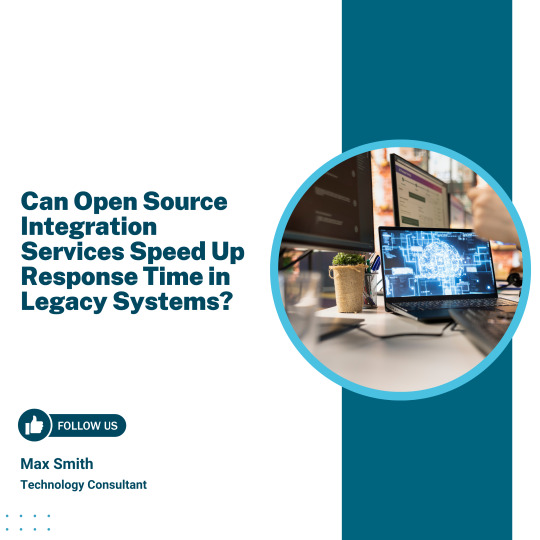
Why Faster Response Time Matters
System response time has a direct impact on business performance. According to a 2024 IDC report, improving system response by just 1.5 seconds led to a 22% increase in user productivity and a 16% rise in transaction completion rates. This means increased revenue, customer satisfaction as well as scalability in industries where time is of great essence.
Open-source integration is prominent in this case. It can minimize latency, enhance data flow and make process automation easier by allowing easier communication between legacy systems and more modern applications. This makes the systems more responsive and quick.
Key Business Benefits of Open-Source Integration
Lower Operational Costs
Open-source tools like Apache Camel and Mule eliminate the need for costly software licenses. A 2024 study by Red Hat showed that companies using open-source integration reduced their IT operating costs by up to 30% within the first year.
Real-Time Data Processing
Traditional legacy systems often depend on delayed, batch-processing methods. With open-source platforms using event-driven tools such as Kafka and RabbitMQ, businesses can achieve real-time messaging and decision-making—improving responsiveness in areas like order fulfillment and inventory updates.
Faster Deployment Cycles: Open-source integration supports modular, container-based deployment. The 2025 GitHub Developer Report found that organizations using containerized open-source integrations shortened deployment times by 43% on average. This accelerates updates and allows faster rollout of new services.
Scalable Integration Without Major Overhauls
Open-source frameworks allow businesses to scale specific parts of their integration stack without modifying the core legacy systems. This flexibility enables growth and upgrades without downtime or the cost of a full system rebuild.
Industry Use Cases with High Impact
Banking
Integrating open-source solutions enhances transaction processing speed and improves fraud detection by linking legacy banking systems with modern analytics tools.
Telecom
Customer service becomes more responsive by synchronizing data across CRM, billing, and support systems in real time.
Manufacturing
Real-time integration with ERP platforms improves production tracking and inventory visibility across multiple facilities.
Why Organizations Outsource Open-Source Integration
Most internal IT teams lack skills and do not have sufficient resources to manage open-source integration in a secure and efficient manner. Businesses can also guarantee trouble-free setup and support as well as improved system performance by outsourcing to established providers. Top open-source integration service providers like Suma Soft, Red Hat Integration, Talend, TIBCO (Flogo Project), and Hitachi Vantara offer customized solutions. These help improve system speed, simplify daily operations, and support digital upgrades—without the high cost of replacing existing systems.
2 notes
·
View notes
Text
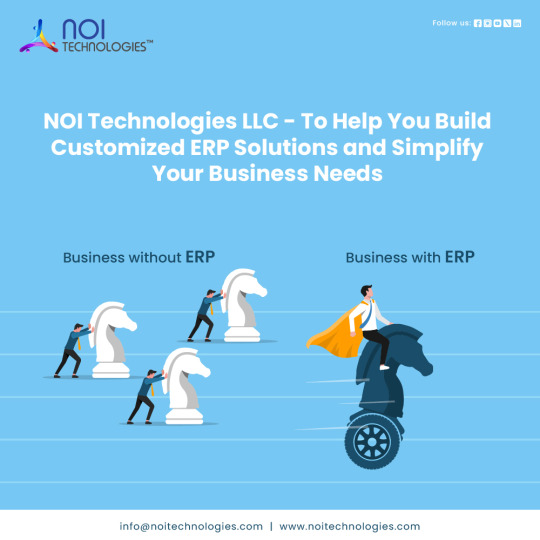
𝗟𝗼𝗼𝗸𝗶𝗻𝗴 𝘁𝗼 𝗱𝗲𝘃𝗲𝗹𝗼𝗽 𝗼𝗽𝗲𝗻-𝘀𝗼𝘂𝗿𝗰𝗲 𝗘𝗥𝗣 𝘀𝗼𝗹𝘂𝘁𝗶𝗼𝗻𝘀 𝗳𝗼𝗿 𝘆𝗼𝘂𝗿 𝗯𝘂𝘀𝗶𝗻𝗲𝘀𝘀? Transform your business with NOI Technologies LLC! 🚀 We specialize in building customized ERP solutions that simplify your operations and meet your unique business needs. Streamline processes, boost efficiency, and achieve your business goals effortlessly with our top-notch solutions. 𝗖𝗼𝗻𝗻𝗲𝗰𝘁 𝘄𝗶𝘁𝗵 𝘂𝘀 𝗻𝗼𝘄 𝗮𝘁 𝗶𝗻𝗳𝗼@𝗻𝗼𝗶𝘁𝗲𝗰𝗵𝗻𝗼𝗹𝗼𝗴𝗶𝗲𝘀.𝗰𝗼𝗺, 𝗼𝗿 𝗩𝗶𝘀𝗶𝘁 𝗼𝘂𝗿 𝘄𝗲𝗯𝘀𝗶𝘁𝗲 𝘄𝘄𝘄.𝗻𝗼𝗶𝘁𝗲𝗰𝗵𝗻𝗼𝗹𝗼𝗴𝗶𝗲𝘀.𝗰𝗼𝗺
#custom erp software development#custom erp development services#noi technologies#open source erp#erp solutions
0 notes
Text
From Grading to Greatness: A Deep Dive into OpenEduCat's Gradebook Management System

In today's educational landscape, effective assessment and grading are crucial components of student success and institutional excellence. With the advent of technology, traditional gradebook systems are evolving to meet the diverse needs of modern educational institutions. In this blog post, we delve into the innovative features and benefits of OpenEduCat Gradebook Management System, and how it is reshaping academic assessment practices for the better.
Introduction:
Gone are the days of manual grade calculations and cumbersome spreadsheets. OpenEduCat Gradebook Management System offers a comprehensive solution for educational institutions to streamline their grading processes, enhance transparency, and improve communication between educators, students, and parents.
1. Centralized Grade Management:
OpenEduCat's Gradebook Management System provides a centralized platform for educators to input, track, and manage student grades across courses and academic sessions. With customizable grading scales and criteria, educators can tailor grading parameters to suit the specific requirements of each course or curriculum.
2. Automated Grade Calculations:
Say goodbye to manual grade calculations and tedious paperwork. OpenEduCat automates grade calculations based on predefined criteria, saving educators valuable time and ensuring accuracy in grading. Whether it's weighted grading systems, cumulative averages, or complex grading formulas, OpenEduCat simplifies the process with its intuitive interface and advanced algorithms.
3. Real-time Grade Updates:
With OpenEduCat Gradebook Management System, students and parents have access to real-time grade updates, allowing them to track academic progress and identify areas for improvement. This transparency fosters accountability and encourages proactive engagement in the learning process.
4. Customizable Reporting:
OpenEduCat empowers educators to generate customizable reports and transcripts, providing detailed insights into student performance, attendance, and behavior. Whether it's progress reports, report cards, or transcripts, OpenEduCat's reporting tools facilitate data-driven decision-making and enhance communication between stakeholders.
5. Integration with Learning Management Systems:
OpenEduCat seamlessly integrates with learning management systems (LMS), enabling educators to synchronize gradebook data with course materials, assignments, and assessments. This integration streamlines the grading process, enhances collaboration among educators, and promotes consistency in academic standards across courses.
6. Support for Standards-Based Grading:
For institutions adopting standards-based grading practices, OpenEduCat offers robust support for aligning grades with learning objectives, competencies, and standards. Educators can assess student performance against predefined learning outcomes, providing actionable feedback for student growth and development.
Conclusion:
In conclusion, OpenEduCat Gradebook Management System revolutionizes academic assessment practices by providing a centralized platform for grade management, automated grade calculations, real-time grade updates, customizable reporting, integration with learning management systems, and support for standards-based grading. By leveraging the power of OpenEduCat, educational institutions can streamline their grading processes, enhance transparency, and empower educators, students, and parents to succeed in today's dynamic educational landscape.
0 notes